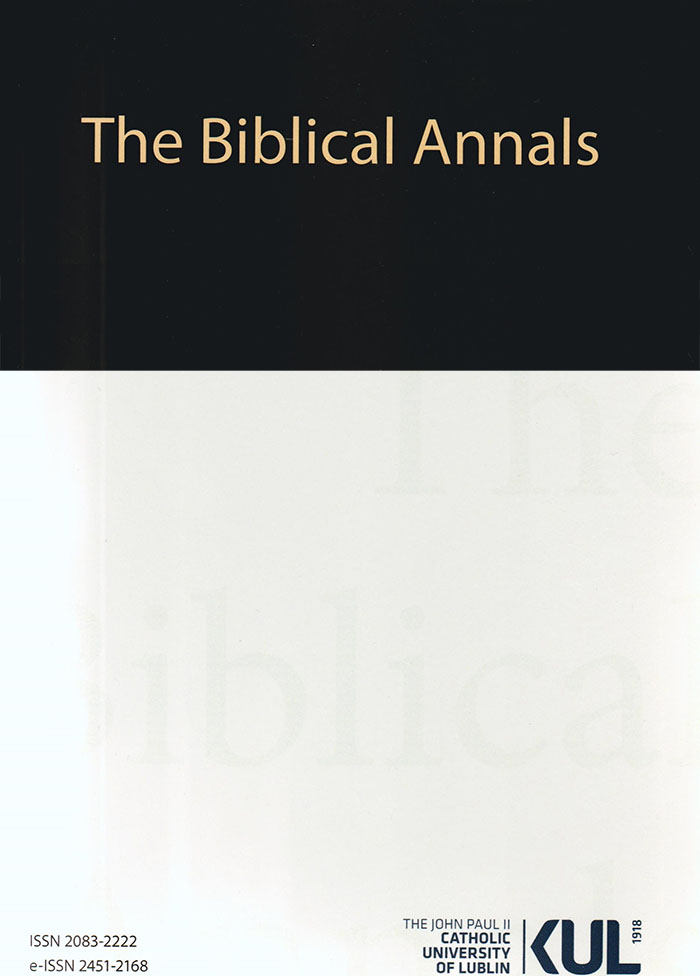What Do Byssus and Crimson Imply about the Hebrew Bible and the Septuagint?
What Do Byssus and Crimson Imply about the Hebrew Bible and the Septuagint?
Author(s): Anna Rambiert-KwaśniewskaSubject(s): Jewish studies, Lexis, Biblical studies, Philology
Published by: Katolicki Uniwersytet Lubelski Jana Pawła II - Wydział Teologii
Keywords: byssus; crimson; textiles; colors; fabric; Exodus; Chronicles; Septuagint; Hebrew Bible;
Summary/Abstract: Fabrics such as byssus and crimson wool can provide us with a surprisingly large amount of information about the circumstances of Biblical books origin. Analysis of lexis related to mentioned textiles, present in Exodus and in Chronicles, allows to notice a meaningful change, occurring in technical biblical terminology. In Exodus, byssus is represented by שֵׁש ׁand crimson – by יִנָש ׁתַעַולֹת ,ּwhilst in Chronicles naming is changed respectively to וץּב ּand ילִמְ רַכ .ּAnalysis of etymology leads to the conclusion, that textiles mentioned in Torah belong to an early vocabulary, created in the times before the exile, in Chronicles, on the other hand, encountered terms belong to period of Babylonian captivity or after the exile. Confrontation of these textiles with the other, non-biblical sources, provides a confirmation of proposed dating and facilitates identification of mysterious biblical byssus, which turns out to be a very thin linen and not – as sometimes confused – sea silk. Juxtaposition of the Greek equivalents allows to draw a conclusion, that terminology of both Torah and Chronicles was known to the LXX translators, who – despite a clear caesura – translate terms consequently: שֵׁש ׁand .κόκκινος toּ כַרְ מִיל andּ תֹולַעַת ׁשָנִי and, βύσσινος/βύσσος toּ בּוץ.
Journal: The Biblical Annals
- Issue Year: 8/2018
- Issue No: 65/3
- Page Range: 297-317
- Page Count: 21
- Language: English

